Introduction:
Thermal insulation materials are an important part of buildings. They are meant to stop heat from escaping and keep the temperature inside comfortable. Insulation materials are used in walls, floors, roofs, and ceilings to keep heat from escaping or getting in. It can save energy and cut down on carbon emissions. Several things, like the building’s design, the climate, and the money, affect the choice of insulation material. Some things that affect how well insulation works are the material’s R-value (thermal resistance), ability to keep air out, and ability to fight moisture.
Thermal insulation materials help save energy and have other benefits, such as reducing noise, preventing fires, and making buildings last longer. Because of this, thermal insulation has become an important part of building planning and construction in modern times.
What is the Thermal Insulation of a Building?
The process of preventing heat transfer within a building is known as thermal insulation. In many regions, winters are long and bitterly cold, necessitating heating systems. They use fireplaces, heaters, steam, etc., to keep the house comfortable. The building owners should install thermal insulation to ensure the heating system’s efficiency. Reduced heating costs are a bonus because less heat is lost through the walls when thermal insulation is present.
By lowering the demand for heating and cooling, effective thermal insulation can save money on utility bills and enhance the quality of life by ensuring a more constant indoor temperature. Energy consumption for heating and cooling buildings can be reduced, which is a positive for the environment.
Purpose of Thermal Insulation of a Building:
- The main purpose of thermal insulation is to keep a house at the same temperature or heat.
- Insulation makes the inside a nice place to live and work. So, the room stays cool in the summer, and in the winter, it stays warm.
- To stop condensation from forming on walls, ceilings, windows, etc.
- the temperature up the heat loss in the winter and the air conditioner less in the summer.
- To make it less likely that water will freeze in the lines and the hot water system will lose heat.
Principles of Thermal Insulation:
Insulation between two objects or spaces of differing temperatures is called thermal insulation. Reducing the rates of conduction, convection, and radiation is key to the principles of thermal insulation.
Conduction:
Through conduction, heat moves between things or along the molecular structures of those materials. Heat can move through solids, liquids, and gases through conduction. Material and state have a big impact on the rate of conduction. Gold, silver, and copper are all good at moving power. The next ones are wood, concrete, and thermal barriers. Most of the time, convection heat movement hides the poor conductivity of liquids, but only sometimes. Even though liquids don’t carry electricity well, gases like air are even worse.
Convection:
When a hot object is surrounded by cooler air, the air that touches it gets hot. The colder air farther away gets heavier than this air. So, warmer, lighter air rises and is replaced by colder, heavier air, which gets heated and rises. So, air convection takes heat from the hot body. If warm air surrounds a colder person, the air gets colder and sinks as heat is transferred to the body.
Radiation:
The process is called thermal radiation, when energy is converted into heat and radiated away. Insulation materials can lessen radiation by absorbing or reflecting the heat to its origin. Aluminum foil and radiant barriers are typical materials to block the sun’s rays.
Types of Thermal Insulation of Buildings:
1. Blanket Insulation:
Insulation blankets are available in sheets or rolls that resemble wallpaper and can be tacked to the ceiling or walls. They have a thickness of between 12 and 80mm and can be bent. We use animal hair, cotton, wood fibers, etc., to create these blankets.
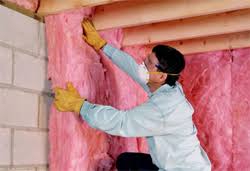
Fig 1; Blanket Insulation
Courtesyarangoinsulation.com
2. Slab or Block Insulation:
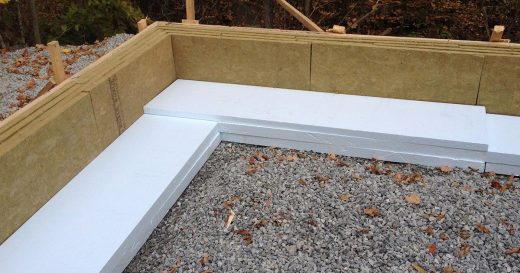
Fig 2; Slab or Block Insulation
Courtesy: ecohome.net
Block or slab insulators are small, rigid units that measure 60 cm by 120 cm and have a thickness of 2.5 cm. Cement is used to bind materials like cork boards, cellular glass blocks, rubber blocks, mineral wood slabs, and wood fiberboards together. Small units like these can be used to line the walls and roofs.
3. Insulating Boards:
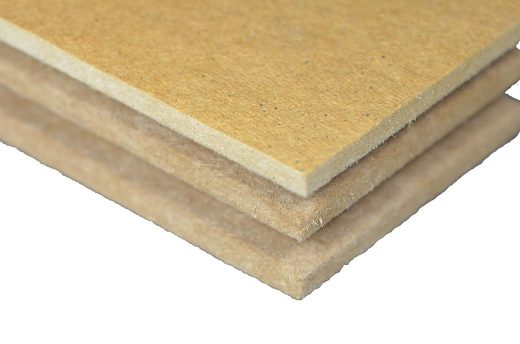
Fig 3: Insulating Board
Courtesy: nordicfibreboard.com
Wood, cane, and paper are just a few materials that can be used to make insulation boards. At the right time and temperature, this pulp is pressed into solid boards. They come in many different shapes. These are often used in plasterboard and other partitions inside a building.
4. Loose-Fill Insulation:
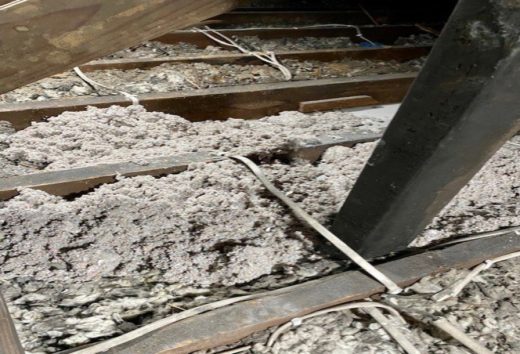
Fig 4: Loose-Fill Insulation
Courtesy: dengarden.com
A stud hollow is cut into the wall to accommodate the positioning of windows and doors. The area between the wall studs is filled with loose-fill insulation. Materials like cellulose, wood fiber wool, rock wool, and other similar substances are employed.
5. Bat-insulating Materials:
These are also sold in blanket roll form, though the rolls used to insulate bats are much thicker. It works the same way as with the blanket. You may hang these anywhere, including the ceiling and walls.
6. Reflective Sheet Materials:
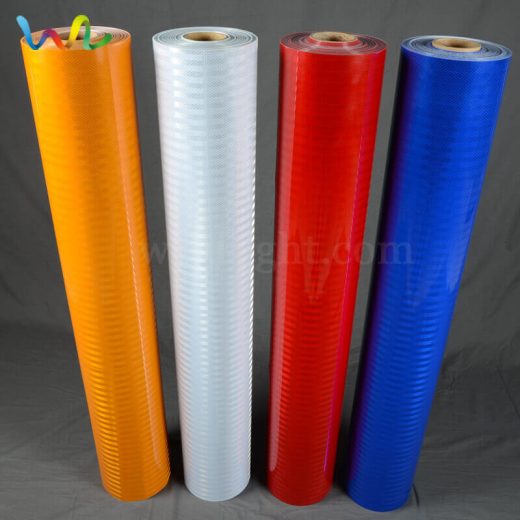
Fig 5: Reflective Sheet Materials
Courtesy: weallight.com
The outer shell of these materials is a big part of how long they last in high temperatures. Usually, they are used with air holes to ensure that the insulating, reflecting surface is always at the front. Reflective insulations include sheet or gypsum boards, steel sheet-reflecting materials, aluminum foils, etc.
7. Lightweight Materials:
Heat loss can also be reduced using lighter aggregates in the concrete mix. Lightweight aggregates, such as blast furnace slag, vermiculite, burnt clay, etc., will give concrete greater resistance to heat.
Materials of Thermal Insulation of Buildings:
i) Fiberglass:
Insulation made of fiberglass is popular. One of its primary selling factors is its affordability. Fiberglass insulation is the most cost-effective solution despite its greater installed cost than other insulating materials. Fiberglass reduces heat loss because it is made by weaving fine glass strands into the insulation. Fiberglass installation can discharge glass powder and small shards that irritate the eyes, lungs, and skin, so proper safety gear is needed. Fiberglass insulation is ideal for non-combustible applications due to its R-values of R-2.9 to R-3.8 per inch.
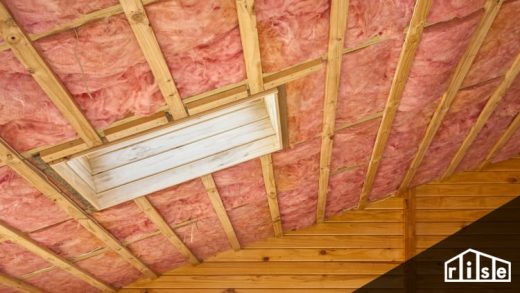
Fig 6: Fiberglass
Courtesy: buildwithrise.com
ii) Polyurethane Foam:
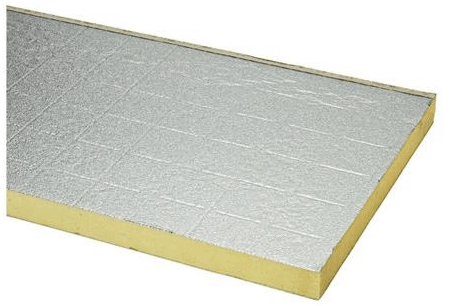
Fig 7: Polyurethane Foam
Courtesy: nuclear-power.com
Polyurethane foam is a spray-on substance that is both lightweight and waterproof. It works well for sealing small cracks and filling up gaps around pipes. One of the greatest insulating materials is polyurethane foam. However, it is more expensive to install than fiberglass or cellulose. Although inexpensive, it is not recyclable; other options are available. Polyurethane’s flammability is another drawback. Polyurethane foam insulation has an R-value of 6.3 for every inch thick.
iii) Mineral Wool:
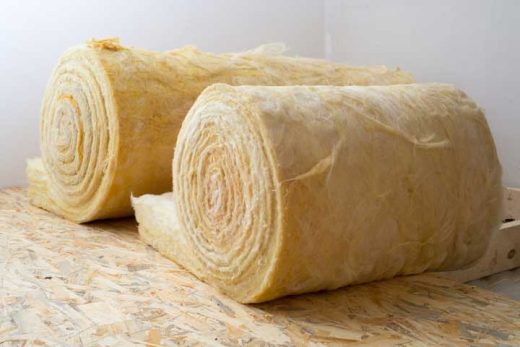
Fig 8: Mineral Wool
Courtesy: researchdive.com
Mineral wool is used for a wide range of insulation types. It could mean either glass wool, fiberglass made from recycled glass, or rock wool, a type of insulation made from basalt. Mineral wool can be bought in bats or on its own. Most mineral wool has nothing added to it, making it resistant to fire. It makes it a bad choice for situations with a lot of heat. The R-value of mineral wool is between R-2.8 and R-3.5.
iv) Cellulose:
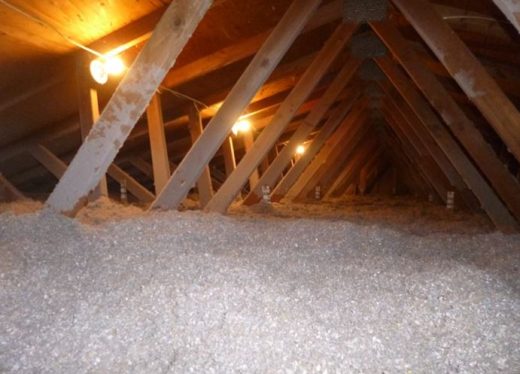
Fig 9: Cellulose
Courtesy: ecotelligenthomes.com
This insulation is chemically and physically comparable to mineral wool but has a narrower use. The product’s cellulose fibers are soundproof and vapor-permeable despite its high heat transfer coefficient of 0.039 W/mK. Cellulose fibers absorb and release moisture from their surroundings, eliminating the need for a vapor barrier. Ventilation is needed to dry the material completely. Wet or dry fibers perform similarly.
Shredded fibers are shot into pre-conditioned spaces in walls, ceilings, etc., using aggregates.
Other applications, such as beam ceiling and joist floor insulation, can use loose fibers. Wet technique cellulose fibers are wetted with water and glue. This mixture sticks to walls and ceilings.
v) Polystyrene:
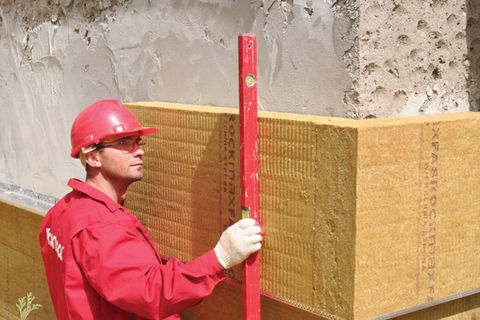
Fig 10: Polystyrene
Courtesy: buildinggreen.com
Polystyrene is thermoplastic foam that excels as an acoustic and thermal insulator. Both expanded Styrofoam (EPS) and extruded Styrofoam (XEPS), often known as Styrofoam, exist. XEPS has a lower R-value of -5.5 compared to EPS’s higher R-value of +4. Polystyrene insulation is unique in having a smooth surface. It has many applications, from the home to the office. Polystyrene insulation is less comfortable than its foam relatives. The foam is often manufactured or cut into blocks for wall insulation.
vi) Perlite:
Perlite insulation is volcanic rock. Perlite insulation rocks’ high water content causes air pockets in heat. Its air cells insulate and resist heat. This chalky-white substance comes as pellets or granules. Perlite insulation blocks airflow in walls, roofs, and foundations for builders and homeowners. This insulation is popular for loose-fill attics. Perlite insulation quiets and insulates the home. Perlite resists fire and slows flame spread. Perlite insulation improves energy efficiency due to its thermal resistance. Insulation saves money and energy. Insulation reduces draughts and improves comfort.
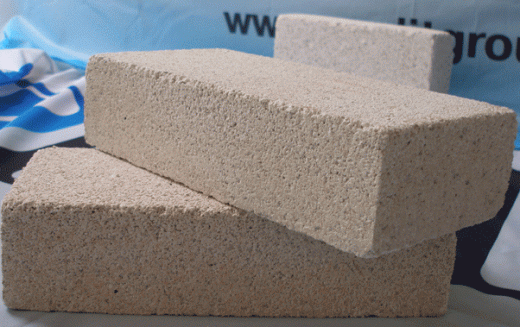
Fig 11: Perlite
Courtesy: nachi.org
vii) Cork:
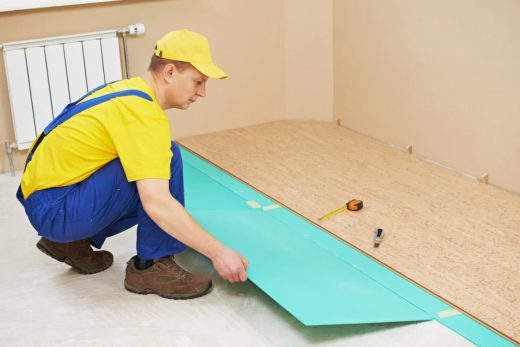
Fig 12: Cork
Courtesy: insulation-info.co.uk
Insulation made from cork is eco-friendly and effective at preventing heat transfer and moisture transfer. The material’s adaptability makes it suitable for various insulating applications. Cork is sold in both board and fragment form. Insulate your walls, ceilings, and floors with corkboards. However, the granules perform admirably in the cavity wall, floor, and screed insulation role. During installation, you won’t need to take any special precautions to keep yourself safe. Cork is safe because it does not aggravate allergies or create dust.
Advantages of Thermal Insulation in Buildings:
- The room maintains a comfortable summer and winter temperature thanks to thermal insulation.
- When thermal insulation is used inside a room, condensation is kept from forming on the interior surfaces of the walls, ceiling, etc.
- Thermal insulation greatly reduces the demands on heating and cooling systems throughout the year.
- When applied to pipes and hot water systems, thermal insulating materials significantly lessen the likelihood of water freezing and heat loss, respectively.
Conclusion:
Heat can be transferred from one location to another via radiation, conduction, and convection. Insulating materials use how their molecules are built to reduce these three ways heat can move through them. Airflow is the primary cause of heat loss in buildings. Anyone who moves air takes heat from whatever it passes. The rate of heat loss is proportional to the air’s velocity, the amount of water present, and the temperature difference between the air and the heat source.
The designer of the building should consider water contamination and the possibility of gas migration within the core matrix when selecting insulation products, as both can lead to a drop in performance that, if left unchecked, can worsen over the lifetime of the building without being seen or fixed. Currently available technology, such as “evacuated panels,” performs better. However, they are now too expensive for most uses, and their performance is still based on the same heat transfer principles.
References:
1. V. (2020, July 2). Thermal Insulation: Definition, Materials & Methods – Civil Engineering Notes. Civil Engineering Notes. https://civilengineeringnotes.com/thermal-insulation-materials-definition/
2. Thermal insulation for buildings. (n.d.). Thermal Insulation for Buildings – Designing Buildings. https://www.designingbuildings.co.uk/wiki/Thermal_insulation_for_buildings
3. Insulating materials – types of thermal insulating materials in buildings – application and properties. (2022, July 4). Purios – Spray Foam Insulation You Can Trust. https://purios.com/en/blog/insulating-materials-types-of-thermal-insulating-materials-in-buildings-application-and-properties
4. Srivastava, A. (2018, February 8). Common Insulation Materials Used in Buildings. Common Insulation Materials Used in Buildings. https://www.ny-engineers.com/blog/common-insulation-materials-used-in-buildings
5. L. (2001, August 24). THERMAL INSULATION OF BUILDINGS | PURPOSE | PRINCIPLES | MATERIALS | METHODS. LCETED INSTITUTE FOR CIVIL ENGINEERS. https://www.lceted.com/2021/08/Thermal-insulation-of-buildings.html
If you have a query, you can ask a question here.


